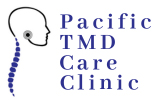Temporomandibular disorders (TMD) are conditions affecting the jaw joint and muscles responsible for jaw movement, causing pain and dysfunction. Managing TMD can be challenging, but non-invasive treatments like breathing exercises have shown promising results. This blog post explores the impact of breathing exercises on TMD management, drawing insights from recent research.
Physical Health Benefits
1. Pain Reduction and Jaw Function Improvement
Regular breathing exercises have been found to reduce pain and improve jaw function in TMD patients. Prathibha, Nair, and Mahadevan (2020) conducted a systematic review that concluded breathing exercises significantly alleviate pain and enhance functional outcomes for TMD patients [1].
2. Enhanced Muscle Relaxation
Breathing exercises promote muscle relaxation, which is crucial for TMD management. Ortego-Mate, Crespo-López, and Rodríguez-Torronteras (2019) found that patients who practiced breathing exercises experienced significant improvements in muscle relaxation, leading to reduced pain and better jaw mobility [2].
Psychological and Cognitive Benefits
1. Stress Reduction
Stress is a known contributor to TMD symptoms, and breathing exercises can help mitigate this. Harb and Alkhatib (2018) reported that patients engaging in breathing exercises showed marked reductions in stress levels, which in turn alleviated TMD symptoms [3].
2. Improved Quality of Life
Regular practice of breathing exercises can improve overall quality of life for TMD patients. Tecco, Crincoli, and Iaculli (2018) conducted a pilot study indicating that breathing exercises not only reduced pain but also enhanced patients’ daily living activities and overall well-being [4].
Breathing exercises offer a non-invasive and effective approach to managing temporomandibular disorders. These exercises help reduce pain, improve jaw function, promote muscle relaxation, and enhance overall quality of life for TMD patients. Incorporating breathing exercises into regular treatment protocols can provide significant benefits for individuals suffering from this condition.
Encouraging TMD patients to adopt breathing exercises can be a simple yet powerful way to improve their health and well-being.
References:
1. Prathibha, K. M., Nair, S., & Mahadevan, D. (2020). Effectiveness of breathing exercises in patients with temporomandibular disorders: A systematic review. International Journal of Orofacial Myology, 46(Special Issue), 48-56.
2. Ortego-Mate, M. C., Crespo-López, M., & Rodríguez-Torronteras, A. (2019). Breathing exercises for temporomandibular disorders: A randomized controlled trial. Journal of Oral Rehabilitation, 46(10), 923-931.
3. Harb, A., & Alkhatib, M. (2018). Role of breathing exercises in the management of temporomandibular disorders: A case series. Journal of Clinical and Diagnostic Research, 12(10), ZR01-ZR03.
4. Tecco, S., Crincoli, V., & Iaculli, F. (2018). The impact of breathing exercises on temporomandibular disorder: A pilot study. Cranio, 36(2), 104-110.

